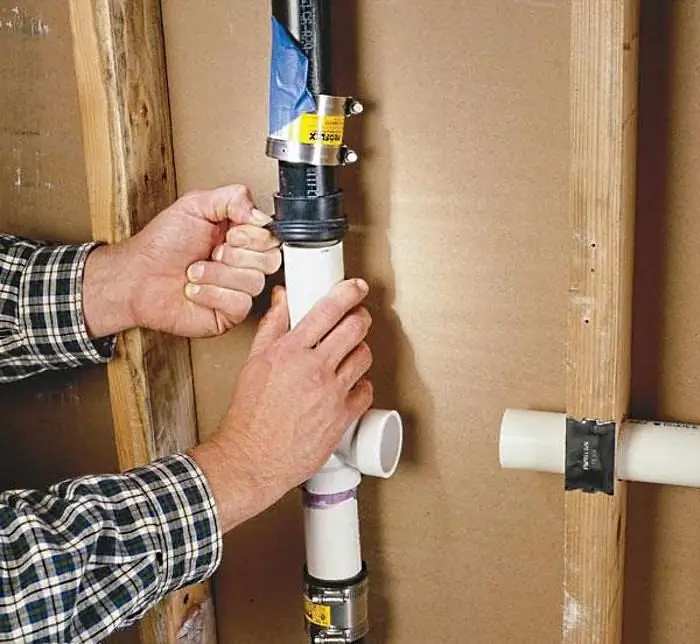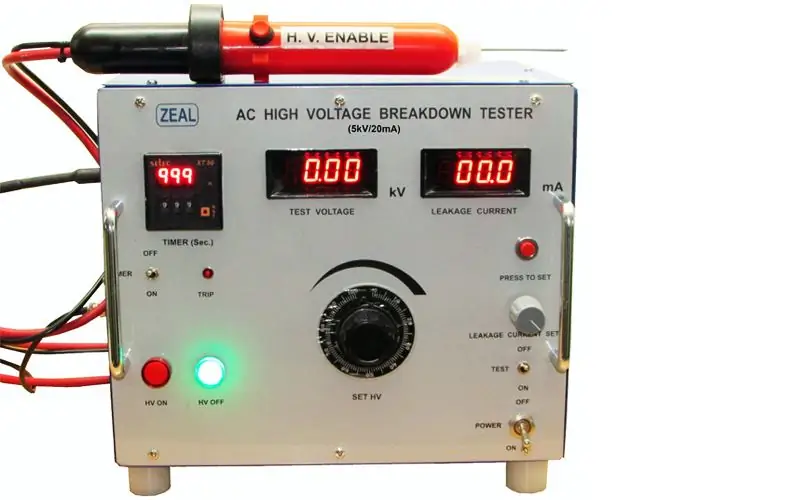2026 Author: Howard Calhoun | [email protected]. Last modified: 2025-01-24 13:10:37
Pump circulation systems are used to support the movement of water coolant in enterprises and private homes. Tasks can be different - from providing a basic heating function to organizing advanced air conditioning facilities. The circulation system itself is formed by several groups of communication elements, but the main link is almost always the pump.

How the system works
At a basic level, the heating infrastructure can assume the natural movement of the coolant. In this case, a single-pipe scheme is used, in accordance with which a hot medium is supplied to the target objects of heat accumulation, and the spent cold streams exit from the opposite side. They are again sent to the boiler, warm up and repeat the described cycle. This model is easy to maintain, but inefficient and rarely suitable, for example, for two-story buildings. In turn, the circulation pump for heating systems allows you to increase the supply power, which ultimately makes it possible to evenly distribute heat to all points of distribution. That is, radiators installed on different floors willbe supplied with a coolant with the same temperature, since the difference in the time of its delivery will be insignificant. The pumps maintain sufficient pressure for lifting, eliminating the cooling of water during movement.
Types of circulation pumps

There are two types of these pumps. In the first case, the rotor of the equipment is located in the zone of movement of the coolant, which provides for the use of the latter as a lubricant. This is the so-called wet rotor configuration, featuring a simple structure, easy maintenance and quiet operation. But it is important to take into account some features of the installation of such units. How to install this type of circulation pump in the heating system?
Installation is made only in a horizontal position in relation to the earth's surface. Inclined and especially vertical layouts can lead to equipment breakdowns already in the first weeks of operation. Also, due to their modest performance, such models are installed mainly in small houses - by the way, the efficiency of the units rarely exceeds 50%. The second type of circulation transfer pumps are models provided with a rotor isolated from the coolant. The advantages of this technique include an efficiency of about 70% and high reliability. However, during operation, the lubricating oil will need to be changed regularly.
Implement Placement Configurations

Layoutpump is determined by the waste coolant removal system. That is, the configuration of channels through which already cold water returns to the boiler. In a one-pipe system, the end pipes of batteries and radiators can be connected to lines that deliver the coolant. In this case, the heating efficiency is reduced in relation to the heating points, which will be supplied with a mixed medium. Such a circulation system assumes that the pump must be located at the point where water enters the boiler equipment. But a two-pipe scheme is more productive in terms of heat transfer volumes. It allows you to completely separate the circuits for directing hot and cold water, without reducing the efficiency of part of the heaters. In such systems, it may be necessary to install a second pump - at the outlet from the heating source.
Installing a circulation pump in the system
Before installation work, it is necessary to flush the heating circuits so that sedimentary elements come out of the pipeline. The presence of foreign particles after repair operations, for example, can disable equipment. The direct installation of the circulation pump in the heating system is carried out by attaching the unit to the outlet or supply pipe. The tie-in is made with complete fittings using a bench tool. It is important to consider that stopcocks must be placed before and after the pump placement point. They will allow in the event of a breakdown of the equipment to stop the delivery of water and carry out repairs.

Next comes the test phase. The circuits must be filled with coolant, and then check the pressure. It must correspond to the optimal level for a particular heating system and the parameters of the pumping unit. If necessary, pressure testing can also be performed, which will identify possible areas of depressurization. But the airing of the pipes can also interfere with the operation of the installation. How to install a circulation pump in the heating system so that excess air is initially removed from the pipeline? To do this, immediately after attaching the unit, it is necessary to start the water and open all the valves. This is a basic operation to bleed the circuits and should be repeated several times at 15 minute intervals.
Reviews on systems with pump circulation
Owners of houses with such communications note their undoubted advantage in terms of effective support for the supply pressure of the coolant. Many also point to the ergonomics of pump control systems, which make it possible to accurately regulate the supply of hot water. However, the circulation system also has a number of disadvantages. Chief among these is the requirement for regular maintenance. For example, pump models provided with an insulated rotor will always need efficient lubrication.
Conclusion

The use of water as a heat carrier is still the cheapest way to organize heating systems. Alternative electric radiators are expensive due to the cost ofelectricity, and gas equipment scares many people with the threat of accidents. But a circulation system that delivers water to radiators is not an ideal solution either. If during operation such communications regularly perform their tasks, which is a plus, then the stage of the technical organization of the pipeline causes a lot of trouble. Added to this is the need to integrate the pump, as well as further measures for its maintenance.
Recommended:
Problems and features of bill circulation

What is a security and a promissory note? Its main features, mandatory details. A brief description of the types of bills: simple, friendly, bronze, financial, treasury, transferable. Fundamentals of international and Russian bill circulation. Problems of this sphere in the Russian Federation. The current state of affairs in the bill markets
Industrial ventilation: features, installation options and reviews

Industrial ventilation is a process, the purpose of which is to comply with technological and hygienic requirements in production, including air in the workplace
Copper radiators: overview, specifications, types, installation features and reviews

Copper radiators are appliances made of an amazing metal, it does not corrode, excludes the reproduction of microorganisms, and is also not afraid of chemical reactions
HDPE pipe: do-it-yourself installation, installation features and instructions

When HDPE pipe is installed, the installation is done mainly by welding or compression fittings. If the installation rules are followed, the connections will be airtight and durable for many years
Universal breakdown installation: overview, features, specifications and reviews

Universal breakdown installation, or, as it is also called, UPU, is an almost indispensable device, especially when it is necessary to work with electrical equipment. The use of the UPU is a guarantee of safety at any start of an electric machine, which is characterized by very high voltage, as well as very high power

